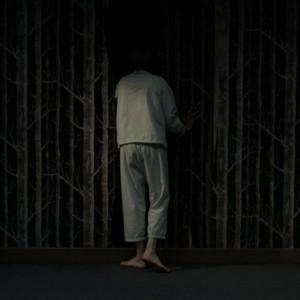The great new documentary by Theo Anthony returns to his now consolidated methodological approach that works through juxtapositions, where the simple juxtaposition of images allows the mysteries hidden in the invisible connections between things to be revealed. That implicit bond which, transcending time, allows us to access a dimension that is gradually more and more ambiguous, but inexplicably almost perfect.
If in his debut 'Rat Film' we started from mice to tell about spaces, borders, real or virtual places in which to be segregated, here the reflection starts from looking, in all its infinite declinations (with the consequent and problematic ethical-social implications). What are we looking at? But above all, is what we watch real, true, objective? Where are the boundaries of the image, of what is there compared to what remains outside? And can technology in this sense help to broaden the possibilities of looking?
The themes are always the same ones dear to Anthony: the illusion of truth, the historical anniversary, the city of Baltimore, its hierarchies, the solutions extravagant to eradicate social evils. But the editing always curated by the same director creates an irresistible and pressing rhythm in a completely new way, making even more enlightening the reflections yet to be discovered that emerge through juxtaposition, between historical data, police training sessions for bodycams, interviews with video surveillance technicians or hilarious entrepreneurs who produce those same bodycams that we see in action.
“The eye sees in everything only what it seeks, and seeks only what it already has an 'idea." That is, when we look and decipher the world we never do so with respect to what really exists before our eyes, but on the basis of the idea that guides our perception (and which will therefore be distorted). In one of the many examples, police bodycams (which should theoretically be created to provide "objective" data on what is happening around) do frame the surrounding world, but not what the officers are doing. That is, they are on their bodies , but they don't show that body, because for those bodycams it doesn't even exist (except in name).
The idea that something dark is hidden behind those images (even before reality) gradually spreads that the film progresses. So what lies behind the aerial video surveillance shots? What are people hiding in their homes, where cameras can't reach? To what extent can we control the images that are produced? And in the same way, who hides behind the lens of a camera, even in a film?
In English “shoot” is the same verb for shooting and shooting videos.
Who knows how many have become murderers in the resume the reality they faced.
From Il Buio In Sala - Report of the 39 Torino Film Festival (2021)
If in his debut 'Rat Film' we started from mice to tell about spaces, borders, real or virtual places in which to be segregated, here the reflection starts from looking, in all its infinite declinations (with the consequent and problematic ethical-social implications). What are we looking at? But above all, is what we watch real, true, objective? Where are the boundaries of the image, of what is there compared to what remains outside? And can technology in this sense help to broaden the possibilities of looking?
The themes are always the same ones dear to Anthony: the illusion of truth, the historical anniversary, the city of Baltimore, its hierarchies, the solutions extravagant to eradicate social evils. But the editing always curated by the same director creates an irresistible and pressing rhythm in a completely new way, making even more enlightening the reflections yet to be discovered that emerge through juxtaposition, between historical data, police training sessions for bodycams, interviews with video surveillance technicians or hilarious entrepreneurs who produce those same bodycams that we see in action.
“The eye sees in everything only what it seeks, and seeks only what it already has an 'idea." That is, when we look and decipher the world we never do so with respect to what really exists before our eyes, but on the basis of the idea that guides our perception (and which will therefore be distorted). In one of the many examples, police bodycams (which should theoretically be created to provide "objective" data on what is happening around) do frame the surrounding world, but not what the officers are doing. That is, they are on their bodies , but they don't show that body, because for those bodycams it doesn't even exist (except in name).
The idea that something dark is hidden behind those images (even before reality) gradually spreads that the film progresses. So what lies behind the aerial video surveillance shots? What are people hiding in their homes, where cameras can't reach? To what extent can we control the images that are produced? And in the same way, who hides behind the lens of a camera, even in a film?
In English “shoot” is the same verb for shooting and shooting videos.
Who knows how many have become murderers in the resume the reality they faced.
From Il Buio In Sala - Report of the 39 Torino Film Festival (2021)



